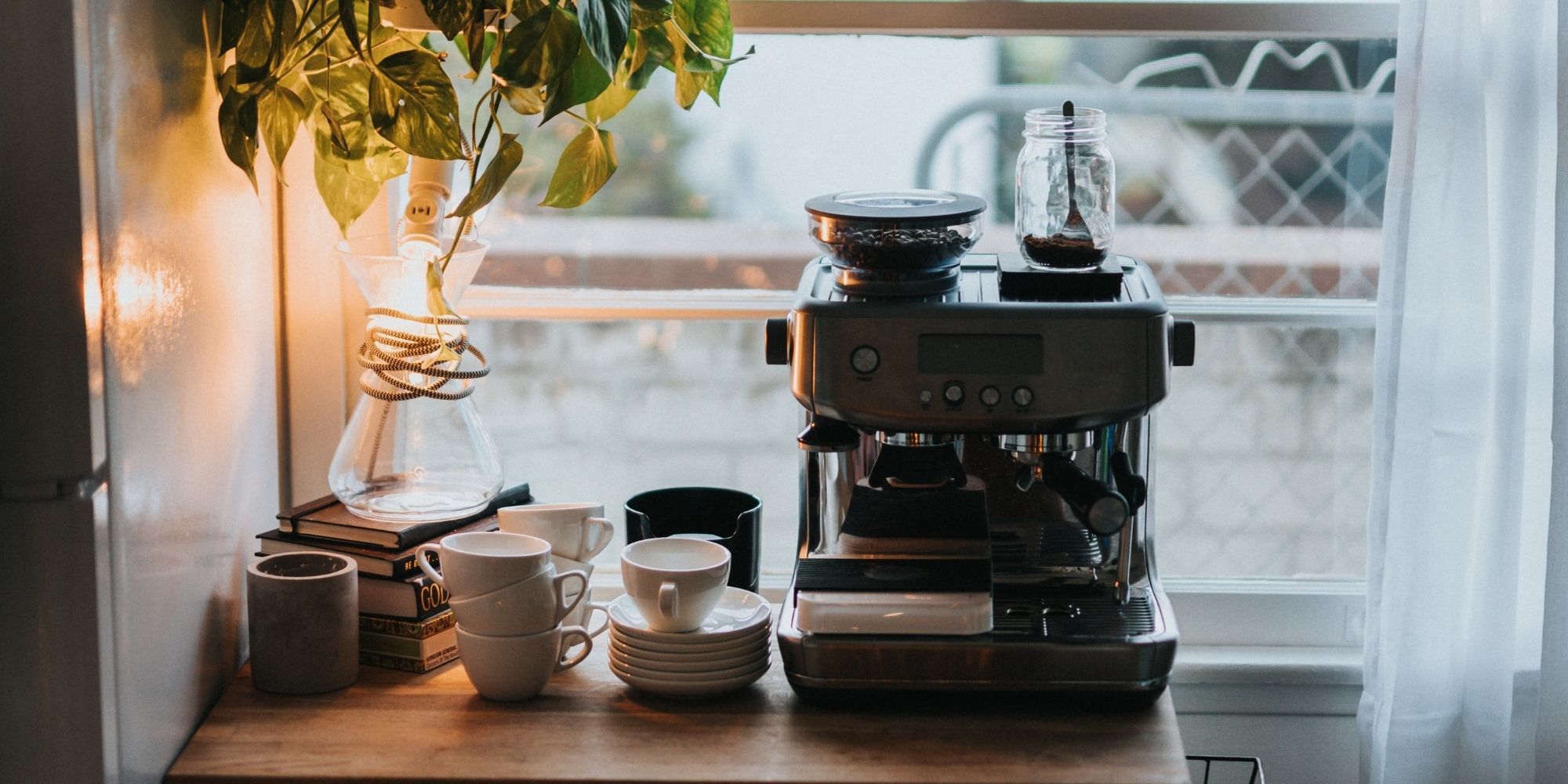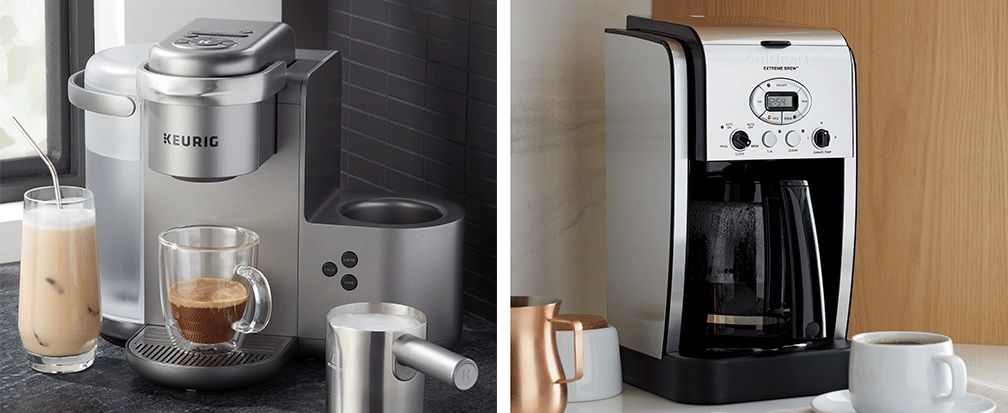Are you having trouble deciding on the right size coffee maker for your home or office? You’re not alone! Choosing the right size coffee maker can be a daunting task.
With this guide, we’ll help you understand how to select the perfect coffee machine for your needs and preferences, so you can enjoy a delicious cup of joe every single day!
The right size coffee maker is an essential part of making a cup of your favorite brew. Coffee makers come in a variety of sizes, prices, and features. How do you know which one is right for you? That’s where this guide comes in.
In it, we’ll cover the size factors to consider when selecting the perfect coffee maker for your needs. From the number of cups to the amount of water required, this guide breaks down all aspects so you can make an informed decision on which coffee maker will make mornings easier (and tastier).
Determine the number of cups you need
When considering the size of your coffee maker, it is important to think about how much coffee is needed to suit your needs. You’ll want to know the capacity of cup or pot sizes the model offers.
If you typically make small amounts of coffee, than a single-serve system might be ideal. The capacity can range from one or two cups all the way up to twelve cups.
Consider who will be drinking the coffee and how much they tend to consume. This can help you narrow down your choices before you decide on your final product.

Explanation of how to calculate the number of cups you need
When determining the size of coffee maker that will meet your household needs, it is important to calculate the number of cups you need. Depending on how much coffee your family drinks there are a few different metrics for calculating this.
If there are only one or two people in your household that drink coffee each day, it is easiest to consider average mug size and make a decision from there. A typical mug will hold 10-12 ounces of liquid, so if you would like one mug per person you would need an appropriate sized coffee maker to brew enough for two mugs. In metric terms, this means that you require a reservoir capacity of about 2 liters for brewing for two mugs.
On the other hand, if multiple people in your family have different schedules and prefer coffee at different times throughout the day, then it might be more practical to buy a machine with a larger reservoir or choose one with multiple one-time use options such as k-cups or pre-ground coffee bags. The average daily requirement under these conditions is 6-12 cups (60-120 ounces). The size of tank will depend on how often you plan on refilling it and whether or not there is space restrictions related to where the machine can be placed in your home.
Discussion of the types of coffee makers and their cup capacity
When deciding on the size of coffee maker to buy, it’s important to consider what type of coffee maker you’ll be using and its capacity. There are many different types of coffee makers available today and some are better suited for certain needs.
Drip Coffee Maker: This type is the most popular, and these machines come with various cup capacities ranging from 4 ounces to twelve cups or more. Depending on your daily caffeine requirements, a drip coffee maker can provide enough cups in the morning or throughout the day.
Single Serve Coffee Maker: These brewers use either K-Cups or other single serve pods to quickly make an individual cup of coffee. Choose these individual makers if you just need a cup or two each morning or if you want variety without having to invest in multiple bags of ground beans that may go stale before you can enjoy them all.
Cold Brew Coffee Maker: There is no industry standard for capacity with cold brew; instead, select a machine that fits your lifestyle and desired amount of cold brew. If you plan on having several tall glasses throughout a few days, consider larger pitchers; whereas smaller sizes like those used for travel mugs work best when needing fewer servings over the course of a week.
Pump Espresso Machine: Small portable machines have much lower capacities than larger machines suitable for home baristas wanting professional quality drinks without needing visiting an espresso bar each time they crave one. Capacity here is typically two shots at once – enough for one drink – but this may be more than enough if you prefer Americanos and cappuccinos with extra milk over traditional shots of espresso.
Consider the brewing time
Brew time is one of the key considerations when buying a coffee maker. There are two main types of brewing time: contact time and brew cycle.
Contact time is the amount of time the water is in contact with the coffee grounds. A longer contact time produces a stronger extract, so if you prefer bolder coffee, look for machines with a longer contact time.
Brew cycle refers to the total length of the brewing process from start to finish, and this can vary between machines depending on their design and technology. Generally, manual or standard drip coffee makers will have the quickest brew times while pod-style and French press machines will have longer ones.
For extra convenience, some machines also feature an automatic shut-off setting that turns off after a certain amount of time has elapsed since brewing began – a great way to save energy and keep your countertops safe!
Explanation of how the brewing time affects the size of the coffee maker
Brew time is a key factor in selecting the right size coffee maker for your needs. The longer a coffee maker takes to produce cups of coffee, the bigger it must be to accommodate an adequate volume of water so there’s enough to fill every cup in a timely manner.
If you need coffee brewed quickly, or you have many people who need a quick cup of coffee at the same time, having a larger capacity machine helps ensure that everyone receives fresh, hot coffee when they need it. On the other hand, if you are only making one or two small servings and don’t mind waiting 15 minutes or more for them to brew, then choosing a smaller machine that prioritizes affordability over speed might be ideal for your situation.
Discussion of the types of coffee makers and their brewing time
There are different types of coffee makers available that can brew coffee in a shorter or longer period of time. Some of these types include:
- Manual drip: This type of coffee maker can brew using gravity, which allows hot water to slowly pass through the coffee grounds. It has a slower brewing time, but produces a very balanced cup of coffee with complex flavors.
- Automatic drip: This type of machine is much faster than manual drip, as it uses heated water passed through the grounds more quickly for a more intense cup.
- French press: For those who prefer full bodied and flavorful cups of coffee, this manual method gives you control over the extraction process to create an intense flavor profile from fine ground beans. Contrary to automatic drip machines which take around 10 minutes, french press only takes around 4 minutes from start to finish.
- Single-serve pod-based: For those looking for convenience and speed, single serve brewers provide on demand coffee quickly and easily with pre-measured pods that produce precise portion sizes every time. Depending on the machine, you can expect one cup brewed in under 5 minutes or even quicker!
- Espresso machines: If you’re looking for the ultimate espresso experience with the richest flavor and creamiest foam possible, then an espresso machine might be worth considering since they use pressure rather than gravity to force hot water through extremely finely-ground coffee beans at high speed creating amazing espresso shots in seconds!
III. Space and storage considerations
When choosing the right size coffee maker, it is important to consider how much space is available in your kitchen or pantry, as well as where you will store the machine when not in use. Coffee makers come in a variety of shapes and sizes, ranging from 12-cup machines to single-serve models. The size of the coffee maker should not only meet your current needs; it should also be able to accommodate any additional features you may want in the future.
Many larger coffee makers come with an array of features that are ideal for large households and businesses. Some machines offer 24-hour programmable settings, grind settings for specialty coffees or a cup warming plate for added convenience. Smaller residential machines are typically available in 8 to 14 cup sizes with up to four specialized beverage options such as lattes, cappuccinos and hot chocolate drinks. Single-serve coffee makers also come with a range of extra features such as adjustable strength control and brew size customization.
Since some coffee makers require special storage units, it’s important to think about where you plan on keeping the machine when it’s not being used. If space is limited or mobility is an issue, there are many attractive options that are easy to move and store away when desired. Those looking for minimalist design solutions can opt for sleekly designed single-serve models that fit conveniently on a kitchen countertop without taking up too much space.
Explanation of how much space you have available for a coffee maker
It’s important to consider both how much space you have in your kitchen, as well as how much coffee you want to make at once. Depending on the type of coffee maker you choose, you should determine the capacity or size of the machine by considering how many cups of coffee it can hold. Different types of machines may also vary in size and shape, so be sure to measure and consider the size of your chosen machine before purchasing.
If countertop space is an issue, then a smaller-sized and more compact coffeemaker is likely better suited for your needs. For those who have more counter space but want to make multiple cups at once, a larger model would be better suited for them. If you plan on entertaining guests for brunch or large group gatherings, you may want to purchase a larger-sized coffee maker capable of making up to 10+ cups of good-tasting refreshments quickly and easily with minimal effort from your end.
Discussion of the types of coffee makers and their size and storage requirements
Choosing the right size coffee maker requires considering your brewing needs, counter and storage space, and expected budgetary constraints. There are a variety of sizes and types of coffee makers to choose from:
-Single-cup drip coffeemakers: These compact machines usually take up less than one square foot of counter space. They make one cup at a time and often include features such as adjustable water temperature and the ability to use freshly ground beans. Some models are designed for a single serving size or require additional pods or filters to accommodate regular cups of coffee.
-Machine specific K-Cup brewers: Machines dedicated to K-cups typically can hold multiple servings at once before they need to be refilled, although they may have an available carafe option. These machines brew snacks (such as cappucinos) more quickly than standard drip coffeemakers while taking up slightly more space on the countertop.

-Standard multi-serving coffee makers: Standard multi serving coffee makers are programmed by setting the timer so that your cup of java will heat up even before you wake up in the morning. These machines can easily handle 12 cups or more with only one filling of water tank, making them especially convenient for larger households or offices with daily morning meetings. However, keep in mind that these floor standing appliances can take up much more countertop area than other types of coffee makers due to their often large water tank capacity fittings placed on the side(s).
When choosing a multi cup brewer it is important to consider how many people will be served at once, how many times it will be used daily; size constraints based on your kitchen’s existing layout; any special features necessary for your needs (such as auto shutoff); and whether you want standard grounds or require capsules/pods such as Keurig’s K cups (or similar brands). Of course, price also plays an important role when selecting which model is right for you.
Conclusion
Choosing a coffee maker can be a truly personal decision. Depending on your budget, lifestyle and desires, one of the three common types may fit your needs perfectly — or you may prefer to buy something else entirely.
Keep in mind that there are many reasons to choose a certain size machine, including the amount of coffee it can make, how much counter space it takes up and how quickly you need the coffee to be produced.
No matter what type of machine you buy, remember that the quality of your cup of coffee depends largely on the beans that you brew with. Choose quality specialty beans for an amazing cup every time.
FAQ’S
What size coffee maker do I need?
The size of the coffee maker you need depends on how many cups of coffee you want to make at once.
What should you look for when buying a coffee maker?
You should look for features such as brewing time, water temperature, programmability, ease of cleaning, and durability when buying a coffee maker.
What is the perfect coffee ratio coffee maker?
The perfect coffee ratio for a coffee maker is 1 to 2 tablespoons of coffee per 6 ounces of water.
How many watts should a good coffee maker have?
A good coffee maker should have a wattage between 600 and 1,500 watts.
What does a 12-cup coffee maker mean?
A 12-cup coffee maker means that it can brew up to 12 cups of coffee at once. However, the actual volume may vary depending on the cup size.
What is the most common coffee size?
The most common coffee size is 8 ounces, which is equivalent to one cup.
What coffee maker makes best tasting coffee?
The best tasting coffee maker depends on personal preference, but some popular options include pour-over coffee makers, French press, and espresso machines.
How many scoops of coffee for 1 cup coffee maker?
You should use 1 to 2 tablespoons of coffee per 6 ounces of water for a 1 cup coffee maker.
How many bar is a good coffee machine?
A good coffee machine should have a pressure of 9 bar for espresso and 15 bar for milk-based drinks.
Do expensive coffee makers make better coffee?
Expensive coffee makers may have better features and build quality, but the taste of coffee is subjective and depends on factors such as the quality of coffee beans and brewing technique.
See Also-
- Best latte coffee maker 2023
- Best ninja coffee maker 2023
- Best nitro cold brew coffee maker 2023
- Best office coffee maker 2023
- Best percolator coffee maker 2023


